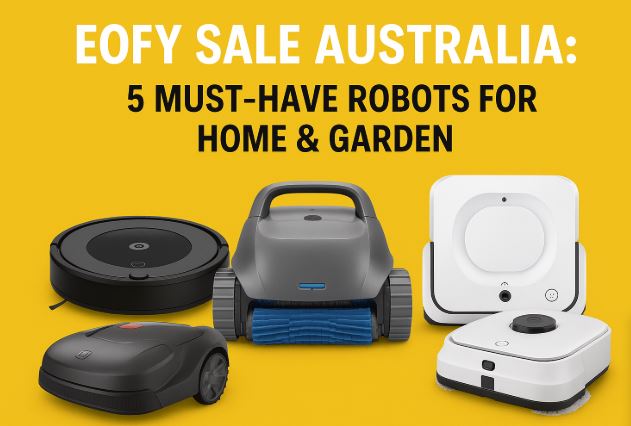Do Robotic Pool Cleaners Pick Up Dead Algae?

Strong 8k brings an ultra-HD IPTV experience to your living room and your pocket.
Owning a swimming pool is a fantastic luxury, but it also comes with maintenance challenges, one of which is dealing with algae. Algae growth is a common issue, especially in warmer climates, and even after treating the pool with chemicals, dead algae can remain suspended in the water or settle at the bottom. Many pool owners wonder: Do robotic pool vacuum cleaners pick up dead algae? Let's explore the effectiveness of robotic pool cleaners in handling dead algae and what you can do to keep your pool crystal clear.
Understanding Dead Algae
Algae are microscopic plants that thrive in water when conditions are favorable—warm temperatures, sunlight, and nutrient-rich water. When you treat your pool with algaecides, chlorine, or other sanitizers, the algae die, but the dead particles remain in the pool. Dead algae appear as a fine, grayish or greenish sediment, often forming a layer on the pool floor or getting suspended in the water.
Unlike large debris like leaves or insects, dead algae are extremely fine and can be challenging to remove using conventional pool cleaning methods like manual vacuuming or skimming. This is where robotic pool cleaners come in.
Can Robotic Pool Cleaners Remove Dead Algae?
Yes, but with some limitations. Robotic pool cleaners are designed to pick up dirt, debris, and even small particles, but their efficiency in picking up dead algae depends on several factors:
1. Filtration Capability
Robotic pool cleaners come with built-in filters that capture debris as they move through the water. However, standard filters may not always trap ultra-fine particles like dead algae. If your robotic cleaner has a fine or ultra-fine filter, it will be much more effective in picking up dead algae. Some models allow you to switch filter cartridges, so upgrading to an ultra-fine filter is recommended for this task.
2. Suction Power
The suction power of a robotic pool cleaner determines how effectively it picks up smaller debris. High-powered models can lift fine sediments, including dead algae, from the pool floor. If your cleaner struggles to pick up dead algae, it might be due to insufficient suction power.
3. Brushing Mechanism
Some robotic cleaners are equipped with rotating or vibrating brushes that scrub the pool surfaces before vacuuming. These brushes help loosen dead algae from the floor and walls, making it easier for the cleaner to suck them up. If your robotic cleaner lacks strong brushes, dead algae might remain stuck to the surface.
4. Pool Circulation and Water Chemistry
Even the best robotic pool cleaner might not be able to remove all dead algae if your pool’s water circulation is poor or if the chemical balance is off. A well-balanced pool with good circulation ensures that dead algae settle properly, making it easier for the cleaner to pick them up.
How to Improve Your Robotic Pool Cleaner’s Performance Against Dead Algae
If you find that your robotic pool cleaner is not effectively removing dead algae, there are a few steps you can take to improve its performance:
1. Upgrade to a Fine or Ultra-Fine Filter
Most robotic pool cleaners come with standard filters that may not capture dead algae effectively. Check if your model supports fine or ultra-fine filter cartridges and upgrade accordingly.
2. Use a Pool Clarifier
Pool clarifiers help bind small particles together, making them larger and easier for your cleaner to pick up. Adding a clarifier to your pool before running the robotic cleaner can improve results.
3. Run the Cleaner More Frequently
If dead algae continue to accumulate, increase the frequency of your robotic cleaner’s operation. Running it multiple times a day or extending its cleaning cycle can help remove more algae.
4. Brush the Pool Manually Before Running the Cleaner
Dead algae can stick to pool surfaces, making them harder to remove. Use a pool brush to scrub the walls and floor before running your robotic cleaner to dislodge algae particles.
5. Improve Pool Circulation
Proper circulation helps distribute dead algae so they can be removed more efficiently. Ensure that your pool’s pump and filter system are working properly. Running the pump for longer periods can also help keep water clear.
6. Vacuum Manually If Necessary
If your robotic cleaner is still struggling to remove dead algae, you may need to use a manual vacuum with a fine-mesh filter bag to target problem areas.
Best Robotic Pool Cleaners for Dead Algae Removal
If you're in the market for a robotic pool cleaner that can effectively handle dead algae, consider models with ultra-fine filtration, strong suction power, and effective brushing systems. Some top-rated options include:
PoolBot B300 – High-powered suction and robust brushing mechanism.
Polaris 9550 Sport – Comes with fine and ultra-fine filters for superior filtration.
Hayward TigerShark – Strong scrubbing brushes and fine filtration system.
Aiper Seagull Pro – Cordless, efficient, and equipped with fine filtration.
Final Thoughts
Robotic pool cleaners can effectively pick up dead algae, but their efficiency depends on filtration, suction power, and brushing capabilities. If your cleaner isn't performing well against dead algae, upgrading to an ultra-fine filter, using a clarifier, brushing the pool manually, and ensuring proper circulation can significantly improve results.
For pool owners looking for a hassle-free solution, investing in a high-quality robotic pool cleaner with strong filtration and scrubbing abilities is the best way to maintain a pristine swimming environment. Keep your pool well-maintained, and you'll enjoy crystal-clear water all season long!
Note: IndiBlogHub features both user-submitted and editorial content. We do not verify third-party contributions. Read our Disclaimer and Privacy Policyfor details.







